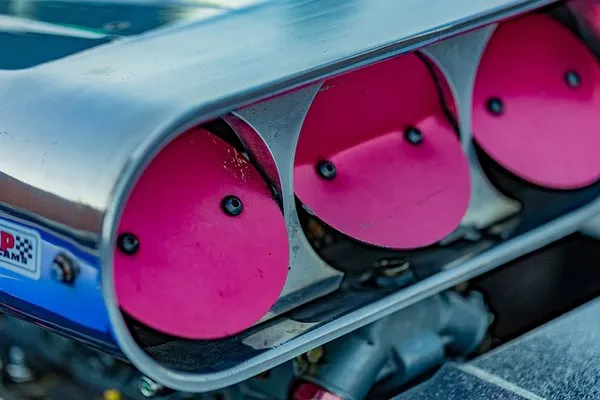Air conditioning systems are vital for maintaining comfort in homes and offices, especially during the hot summer months. However, one of the common issues that homeowners face is a malfunctioning compressor. When the compressor won’t run, the air conditioning unit will not cool the air effectively, leading to discomfort. In such cases, it becomes necessary to recharge the AC system with refrigerant. This article will guide you through the process of charging your air conditioning system when the compressor is not operational.
Understanding the Role of the Compressor
What is an AC Compressor?
The compressor is often referred to as the heart of the air conditioning system. It is responsible for compressing the refrigerant, which then circulates through the system, absorbing heat from the indoor air and releasing it outside. When the compressor fails to operate, the entire cooling process is disrupted, and the system may need to be recharged with refrigerant.
Common Symptoms of a Faulty Compressor
Before attempting to recharge your AC unit, it’s essential to determine if the compressor is indeed faulty. Common symptoms include:
No Cool Air: The AC is running, but the air being emitted is warm or at room temperature.
Strange Noises: If you hear clicking, buzzing, or humming noises, it may indicate a problem with the compressor.
Overheating: A compressor that is too hot to touch could be failing.
Tripped Circuit Breaker: Frequent tripping of the circuit breaker indicates that the compressor might be drawing too much current due to an internal issue.
Safety Precautions Before Charging the AC
Gather Necessary Tools and Equipment
Before you start the charging process, ensure you have the following tools:
- Refrigerant (the type will depend on your AC unit, typically R-410A or R-22)
- AC manifold gauge set
- Vacuum pump
- Refrigerant scale (to measure the amount of refrigerant)
- Safety goggles and gloves
- Wrenches for connecting hoses
- Thermometer to monitor air temperature
Safety Measures
Turn Off the Power: Ensure the power to the AC unit is turned off at the circuit breaker. This is crucial for safety while working on the system.
Wear Protective Gear: Always wear safety goggles and gloves to protect yourself from refrigerant exposure.
Ventilation: Make sure the area is well-ventilated to avoid inhalation of refrigerants or any potential fumes.
Diagnosing the Issue
Checking Electrical Connections
Before attempting to charge the system, it is crucial to diagnose why the compressor won’t run. The first step is to check the electrical connections:
Inspect the Circuit Breaker: Reset the breaker if it has tripped. If it trips again, there may be a deeper electrical issue.
Examine the Thermostat: Ensure the thermostat is set to the cooling mode and at a temperature lower than the current room temperature.
Look for Loose Wires: Inspect the wiring connections leading to the compressor. Loose or damaged wires can prevent the compressor from receiving power.
Testing the Capacitor
A faulty capacitor can also cause the compressor not to start. Here’s how to check it:
Locate the Capacitor: This is usually located near the compressor.
Discharge the Capacitor: Use a screwdriver to short the terminals (be cautious).
Test with a Multimeter: Set the multimeter to the capacitance setting and measure the capacitor’s value. If it’s significantly lower than the rating, it needs to be replaced.
Charging the AC System
Preparing the System
Connect the Manifold Gauges: Attach the low-pressure side (blue) and high-pressure side (red) hoses from the manifold gauge set to the respective service ports on the AC unit.
Ensure Proper Seal: Make sure the connections are tight and there are no leaks.
Vacuuming the System
Connect the Vacuum Pump: Attach the vacuum pump to the center port of the manifold gauge.
Run the Vacuum Pump: Turn on the pump and allow it to run for about 15 to 30 minutes. This step removes moisture and air from the system, which is crucial for effective refrigerant charging.
Monitor the Gauge: Ensure the low-pressure gauge reads below 30 inches of mercury (Hg). If it holds the vacuum, the system is sealed correctly.
Adding Refrigerant
Weigh the Refrigerant: Before adding refrigerant, check the manufacturer’s specifications for the correct refrigerant charge. Use the refrigerant scale to weigh out the correct amount.
Open the Valve: Slowly open the refrigerant canister valve to let the refrigerant enter the system. Monitor the manifold gauges throughout this process.
Check the Low-Pressure Gauge: The low-pressure gauge should rise to the appropriate level, typically between 30 and 40 psi, depending on the ambient temperature.
Close the Valve: Once the correct amount of refrigerant has been added, close the valve on the refrigerant canister.
Final Steps
Run the AC Unit: Turn on the power to the AC unit and set the thermostat to the desired temperature. Monitor the system for any unusual noises or performance issues.
Check the Temperature: Use a thermometer to measure the temperature of the air coming from the vents. It should be significantly cooler than the room temperature.
Inspect for Leaks: After charging, inspect all connections for any signs of refrigerant leaks, which could indicate a problem.
See Also The Smallest Air Compressor You Can Buy
Conclusion
Charging an air conditioning system when the compressor won’t run can be a challenging task. However, by following the proper diagnostic and charging procedures outlined in this article, homeowners can effectively recharge their AC units and restore cooling performance. Always prioritize safety and ensure that you have the right tools and equipment before beginning any work on your HVAC system. If the compressor continues to fail after recharging, it may be time to consult a professional technician for further diagnostics and repairs. Proper maintenance and timely interventions can significantly extend the lifespan of your air conditioning system, ensuring comfort during the warmest months.
You Might Be Interested In

